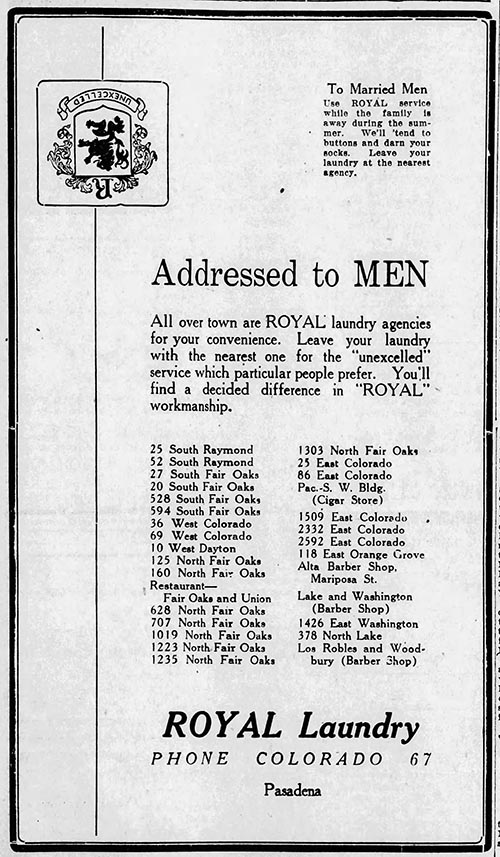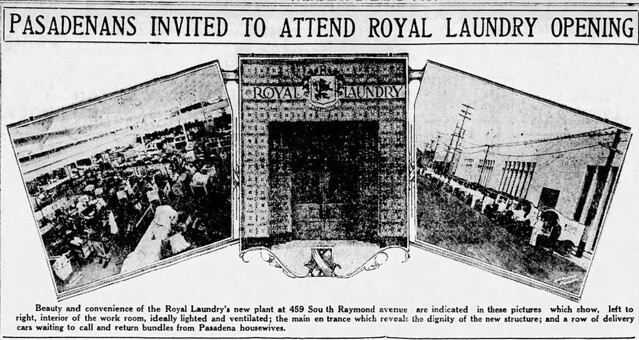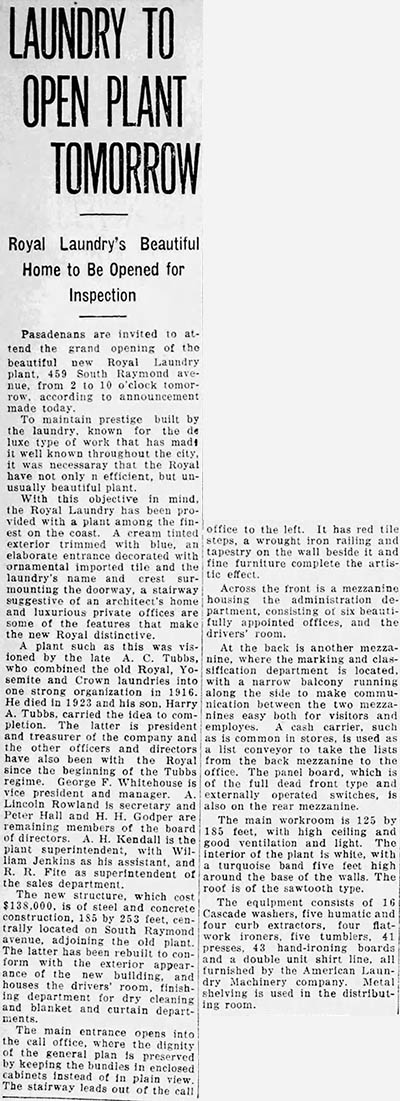the smiling men of pasadena 5: a clean smile
The December 31, 1920 edition of the Pasadena Post spotlighted (mostly) grinning photos of the paper's staff and local businessmen. Given my penchant for going down research rabbit holes related to anything quirky I stumble upon (and desire to learn more about places I've travelled to), this series will look at some of the stories behind the smiling faces.
Pasadena Post, December 31, 1920.
A clean, fresh start to a new year?
This installment's smile is courtesy of a business that would leave Pasadena with an art deco landmark. I discovered little about George F. Whitehouse, other than he remained an executive for Royal Laundry through the late 1920s, after which he was associated with another launderer. His 1946 obituary bluntly states that he "dropped dead at his home."
Royal Yosemite Laundry (the "Yosemite" part was dropped by the mid-1920s) grew out of a merger of three cleaners orchestrated by Arthur Clinton Tubbs in 1916. Tubbs, described in his 1923 Los Angeles Times obit as "a pioneer resident of Pasadena," was involved in civic affairs from the 1890s onward.
In 1919, along with two competitors, the laundry took part in a project based on trials out east to shift the cleaning habits of their customers. The Pasadena Post explained the traditional way of doing things and its drawbacks.
Practically throughout the world Monday has been universally recognized as wash day. The result has been that approximately 60% of laundry patrons have requested that their work be called for on that day. The result has been that laundries were crowded to capacity with work during the first three days of the week, with customers expecting return delivery on Thursday or Friday of the same week. These requests have made it necessary for drivers to work long hours during the early and latter part of the week and gives them little to do during midweek.
Likewise, under the old system, it requires that girl employees work under a strain the first part of the week and causes them to be almost idle during the latter days of the week, a condition which is not encouraging to employees and does not render the laundry patron an efficient and dependable service.
The solution? Spread orders out over the course of the week, forcing customers to consider days other than Monday for collection of their dirty laundry. "In view of the advantages to laundry employees," observed Mrs. Seward A. Simons, the secretary of the State Council of Social Agencies, "the plan is to be the improvement of conditions for laundry employees, the plan is to be commended and should receive hearty cooperation and support from the public."
Pasadena Post, May 26, 1921.
The laundry's contribution to a special five-page advertising section dedicated to "Pasadena's Business Optimists," which would make a reader very drunk if they tried to play a drinking game where a sip is tossed back every time "optimists" pops up. I can see a section like this working today for businesspeople feeling bullish about the post-pandemic world.
Pasadena Post, July 5, 1926.
There were also a series of messages for women...
Pasadena Post, August 23, 1926.
Pasadena Post, August 30, 1926.
Pasadena Post, September 7, 1926.
Around the time these ads were published, the company announced it would build a new facility. The architect was Gordon Kaufmann, whose commissions during the 1920s and 1930s included the Athenaeum at Caltech, the LaQuinta resort complex in Palm Springs, the Los Angeles Times Building, Santa Anita racetrack, and adjustments to Hoover Dam.













Comments